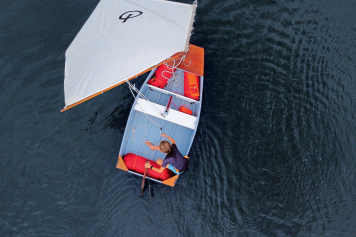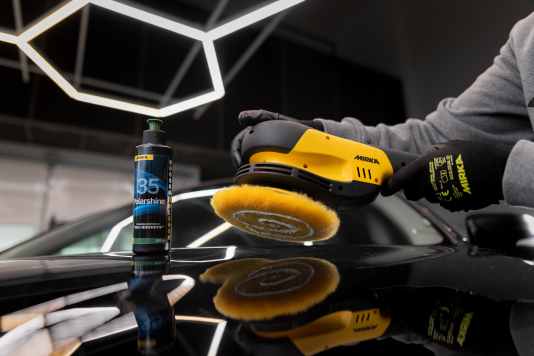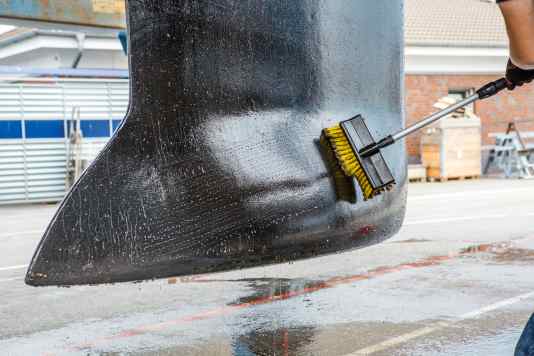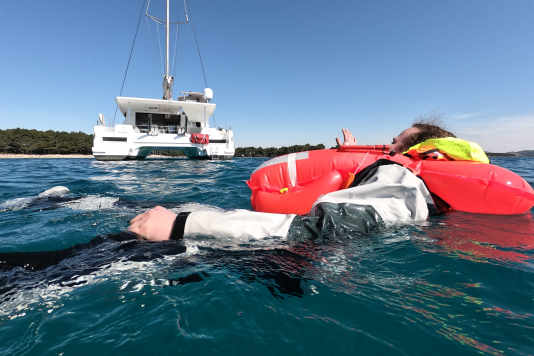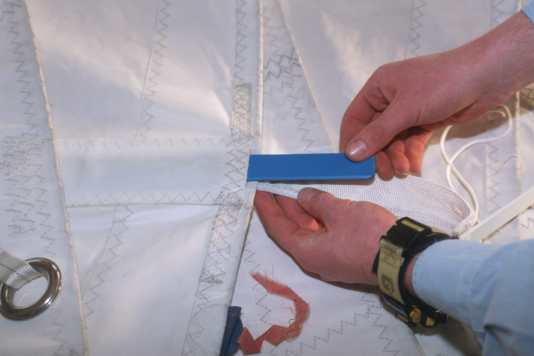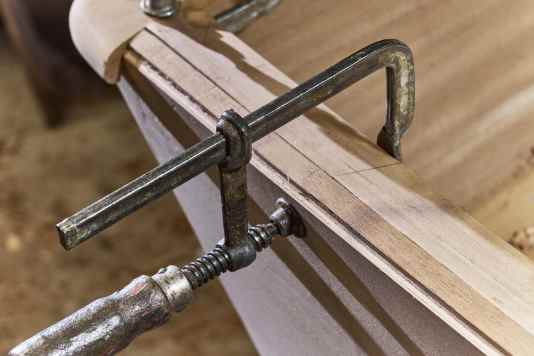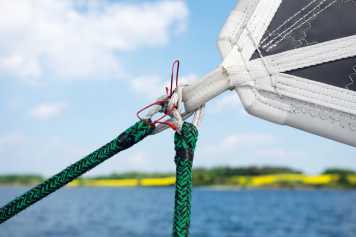Yacht DIY - the right care, maintenance and repair for yachts on your own
One Yacht means responsibility. Not only on the water, but also when it comes to maintenance, possible repairs and inspections. Services that every yacht owner must perform regularly in order to enjoy their sailing boat or motor yacht for a long time. YACHT provides an insight into the following areas Yacht care , yacht maintenance and Yacht repair. In addition, we want to show what is known about the yacht Do-it-yourself (DIY) is possible and when a Shipyard or a workshop must be visited.
The urgency and importance of maintenance and care for a yacht
Repairs, maintenance and care are just as much a part of water sports as having fun on the water. The amount of effort required to maintain the yacht depends on various factors. These include the age of the boat, its size and the Yacht electrics and general yacht technology.
The tasks facing the owner are complex. While with small Dinghies repairs are rarely necessary and it is often sufficient to clean something every now and then and to maintain the Sail catamarans and large sailing boats require considerably more effort. Paint repairs, stainless steel work and antifouling are just a few of the things on the checklist or maintenance schedule that need to be carried out regularly. This is the only way to ensure that the boat can be used on the water.
But it's not just the technology that plays a major role. Even the well-being of the yacht is ensured by yacht care. With the yacht DIY, it is possible to carry out many of these care steps and maintenance work yourself. Other things, however, require a professional hand.
It is almost impossible to repair the yacht heating system yourself. This requires a workshop or shipyard to provide this service and take a closer look at the on-board systems such as the yacht heating system.
In order to define the scope of maintenance measures more precisely, the individual areas of the boat must be considered in a differentiated manner. They are divided into, among other things
- Hull
- Deck
- Rig
- Sail
- Furnishings
- On-board electrics
- Installations
- Motors
Yacht repairs - important and necessary at regular intervals
Repairs are always a nuisance. They cost money, are time-consuming and disrupt the enjoyment of water sports. But they are necessary in order to maintain this enjoyment for as long as possible.
When it comes to yacht repairs, a distinction must be made between yacht DIY - i.e. DIY repairs - and repairs carried out by a specialist. Even if the yacht owner is well trained in repair work, he will not be able to carry out some of the work due to the technical requirements.
DIY repairs to a yacht include, among other things:
- Woodwork
- Paint repairs
- Antifouling
- Repairs to yacht technology depending on skills and tools
The work or areas for which a specialist should be called in include, among others:
- Repairs to the yacht heating system
- Engine
- Anchor winch
- Winch
- Canvas work
- Major defects in the rig
- On-board electronics
To be able to actually do yacht DIY, however, you need a well-equipped toolbox and sufficient accessories.
The toolbox includes, among other things:
- Screwdriver and spanner
- Combination pliers, pipe wrench and pincers
- Allen key
- Hammer
- Hacksaw
- Brushes in different sizes
- Putty knife in different versions
- Wire brush
- Sandpaper
- Screw clamps
- Files and rasps
Depending on the boat and your personal yacht DIY options, the toolbox can be expanded as required. However, a well-stocked toolbox is not enough to carry out repairs and maintenance work. It also requires materials and accessories that can be used. Depending on the area, these include
- Rust inhibitors, contact sprays, silicone sprays, lubricants, paints and varnishes for maintenance and care in general
- Gaskets, engine oil and transmission oil, spark plugs, coolant, oil filter, air filter and fuel filter for the engine or outboard motor
- Cordage, sailcloth, sail tape, blocks, bolts, shroud tensioners and mast sliders for rigging, rigging and sails
- Measuring device, cable, installation material, replacement regulator, wire stripper, fuses and lamps for the electrical system
Procuring spare parts for yacht DIY - there are many ways to do it
Various channels can be used to procure spare parts. One of the most important points of contact for yacht spare parts and accessories are the Shipyards and dealers. Whether winch, on-board systems, engine, anchor winch or general yacht electronics - the options for procuring spare parts directly from the manufacturer or from dealers are very good.
Small boat accessories and simple spare parts are available from many specialised sites on the web. There are complete repair kits as well as individual parts such as oil filters, spark plugs, starters, propellers and many other items. Even synthetic compressor oil, fenders, anchor chains, life jackets and cockpit accessories can be found online in many different versions for every type of boat.
The right workshop for the boat
Not all repairs can be carried out on your own. Yacht DIY is only possible up to a certain point. There are sailing yachts that can be completely repaired using your own methods. And then there are boats where this is not possible. Woodwork, stainless steel work or paint repairs usually work quite well without a workshop. But for more extensive work on board, a specialist is required. This specialist must be found to suit the Repair maintenance and repair.
The choice of this workshop must be made with some preliminary considerations. Not every one is suitable for your boat. It is always advisable to find a workshop that is close to your mooring. If technical defects occur, short distances are important.
You also need to check whether the workshop is able to repair your own boat. There are workshops that specialise in specific boat types. And there are workshops that are broad-based and flexible. This can be clarified very well in advance by talking to other water sports enthusiasts and by contacting potential workshops.
Even the price-performance ratio is a criterion in the selection process. Repairs are important and necessary. However, they must be affordable. The problem with boats is that, unlike cars, authorised workshops are not available everywhere. There are countless car garages. However, the situation is somewhat different for a boat workshop. That's why you need to look at the price-performance ratio in advance. This can be done by drawing up a cost estimate or requesting a current price list.
Service, friendliness and flexibility are also attributes that are associated with the workshop you are looking for. Does the boat need to be towed and taken out of the water? Or does it have to stay in the workshop for longer?
The size and weight of the boat is often an important issue. A small sailing boat that can be pulled onto the trailer can be easily taken out of the water. A large Sailing yacht On the other hand, a crane with the appropriate lifting capacity is required. This service must be available via the workshop to suit the ship in order for it to be suitable.
Maintenance and care of the yacht - in the interest of preserving its value
A yacht is only an investment property if it is well maintained. Yacht care and maintenance must not be neglected in order to ensure unrestricted use of the boat. Maintenance and care" are terms that can be defined very broadly.
There are care measures that involve cleaning the deck. On the other hand, there is maintenance work that relates to the on-board systems, the yacht's electrics and similar things. It is therefore important that there are different procedures for the regular maintenance and care of the yacht.
In order to proceed efficiently, various categories are created that are taken into account during maintenance and care.
These include:
- Deck
- Yacht electrics
- On-board systems
- Cabins
- Cockpit
- Rig
- Underwater hull
- Rudder system
- Sheets and ropes
Regular inspection of the yacht system
Once the various areas on board have been defined, the maintenance, care and repair work can be properly checked and carried out with the help of a maintenance and care plan. To do this, it is important to check the individual areas as a first step.
The maintenance and care of the deck usually takes place in a different time frame than the inspection of the yacht's electrics and on-board systems. And for the most part, the cabins in their function require less intensive maintenance and care than the electrical systems. Yacht electrics. The right time management is therefore important.
The time frame in which the respective maintenance and care measures take place depends on various factors. These include the type of boat, the material from which the boat was made and the extent to which on-board electrics and other technology are present. A small Dinghy has no on-board systems and no yacht electrics that require major maintenance. In contrast, a large sailing boat with a navigation unit, elaborate steering position and extensive on-board systems is set up differently and therefore has a different maintenance and care plan. It is therefore always necessary to decide on the basis of the circumstances how often the individual areas should be checked and how the maintenance schedule should be organised.
What does effective yacht care involve?
Effective means proceeding systematically and with the best possible result. Effective yacht maintenance is about achieving the best possible result with the least possible effort.
Effective yacht care is not just about cleaning the deck. Maintenance also always includes touching up and repairing. Paint repairs carried out by Yacht-DIY can be carried out all year round. Minor damage to the paintwork can be repaired more quickly than damage that has been exposed to the weather over a longer period of time and has therefore increased in size and intensity.
The same applies to stainless steel work. If the first signs of wear, abrasion or defects appear, it is worth making a correction directly via yacht maintenance. The smaller the damage, the easier it is to repair and maintain. In addition, reacting quickly has a positive impact on costs.
Antifouling is about protecting the boat below the waterline. Such maintenance and care work can only be carried out when the boat is taken out of the water. Antifouling is therefore a maintenance measure that is carried out almost exclusively in the winter months. Ideally, this should be done at the berth selected for the winter months.
Further boat maintenance tips
For sailing boats in particular, it is important that the boat is maintained to a high standard. Among other things, it is also important to avoid unnecessary flapping of the sails in the wind. The plastic fibres in the sail fatigue relatively quickly, causing the sail to lose its shape and the batten pockets to tear.
Mooring lines can be sewn around with cloth at the points where they run through hawsers and lips. Rubber or plastic is also recommended at this point. This reduces abrasion on the mooring line due to the constant friction, which improves durability. If the quality of lines, mooring lines and halyards deteriorates due to abrasion, they should be replaced immediately. If this is not done, it can become a hazard on the water.
If scratches have formed in the plastic hull, care must be taken to ensure that they are not too deep and that the glass fibre is not visible. If this is the case, it must be repaired directly with a suitable filler. Even if this may detract from the appearance. Otherwise, water will be absorbed by the laminate, causing major damage.
Tips for winterising
Winterising sailing boats presents a particular challenge. The rig is unrigged before the boat is taken out of the water. The hull of the boat should be cleaned with fresh water after taking it out of the water. Fouling on the underwater hull in particular must be removed immediately. The drier this growth is, the more difficult it is to remove.
Whether the boat is stored indoors or outdoors is the owner's decision. It is important that the entire boat is well ventilated. The best storage location is, of course, a heated hall. However, such storage is not always available and every boat owner must look at how he organises his requirements.
If the sailboat has a Motor If the fuel tank is seawater-cooled, it should be cleaned after launching and prepared accordingly for winter storage. The fuel tanks - whether petrol or diesel, fixed or portable - should not be neglected either. Our tip here too: professional care is important. If necessary, the mechanic or a maintenance service will take over these tasks. However, many of these tasks can be performed using the YACHT articles on the following topics Care , Repair and Lifehacks already do this independently.
Choosing the right berth
Many boat owners are happy when they have found a berth for the summer. For winter storage, an additional search is necessary to find the ideal spot. But what is the best and right berth for your own boat? Yacht the Catamaran or the small Dinghy ?
Of course, your own interests always take centre stage. Which Precinct would I like to use? How often do I want to use my boat? How far away can the marina be from my home? What services should the marina or harbour provide in order to make the best use of the berth during the summer months? What costs may be incurred for the mooring?
It is almost impossible to make a generalised decision. Should you choose a mooring in a popular area with a large marina that has a petrol station, a repair service, spacious sanitary facilities and catering facilities in addition to the possibility of pumping out faeces and taking on fresh water? Everything is possible. But be careful? Pretty much every owner dreams of this. But the reality is somewhat different.
The large marinas in the favoured areas are usually very expensive in terms of mooring fees. And not every boat owner lives close to these favoured areas. It is therefore important to consider what is actually needed. And here it is important to look at the boat and its needs.
A small dinghy without a holding tank, fresh water tank or large diesel tank does not usually need a marina that offers such services. If a small outboard motor is installed, the fuel for this can be brought along in a canister. In this case, it is important to find a marina that offers a small and affordable berth.
You also need to check how the boat can be put into and taken out of the water in the marina or harbour. Is there a slipway? Is a crane available? Up to what load capacity can the crane be used? These are also things that always depend on the boat and need to be clarified in advance. And of course the draught of the harbour basin and the individual berths is also a decisive criterion.
Equally important is the power connection at the jetty. If the boat requires shore power, it will not work without a power connection at the jetty. If it is a small sailing boat that is not dependent on shore power, there is no need for a power connection at the jetty.
In the best case scenario, different marinas are looked at and checked. This can be done on site, but also online or through the experience of other boat owners.
The winter camp
For winter storage, you need to decide whether you want to store outdoors or indoors. If you decide in favour of indoor storage, you must also consider whether you want a heated or unheated shed. You also need to consider how the yacht will get there. Is it possible to drive to the winter berth and can the boat be lifted out of the water there? What facilities are available for this? What are the costs involved and do fixed dates have to be agreed?
With simple winter storage, it is often the case that the retrieval service is not provided. This means that every boat owner has to take care of how their boat gets to winter storage themselves.
Another important issue relating to the winter berth is the question of what service is offered there. Service is not just about whether the hall is heated or not. It is also not about monitoring the hall or the outdoor area, but about whether repairs, maintenance and care measures can be carried out during the cold season. Are there mechanics, a workshop and the provision of spare parts and accessories? To what extent does the boat owner have to get involved, or can this work be outsourced completely? The same applies here: find out beforehand, consider your own needs and then choose at your leisure.
Yacht life hacks and practical sailing tips
On Tour go, feel the wind in your sails and enjoy the freedom - who doesn't like that? However, in order for the adventure on the water to become an experience, precise planning is required.
Checklists have always been helpful and indispensable when preparing for a sailing trip. These checklists are not just about planning the provisions and the tour correctly. It is also about checking the yacht and the technology as well as the Equipment to be carried out. It is also important to optimise route planning and Navigation so that the trip can be a success. But what can such a checklist look like?
Preparatory measures for a sailing trip lasting one or two days do not have to be planned for a long time. This can be done on the spur of the moment, without any major checks, extensive planning preparation and the need to develop and implement strategies. But when it comes to a longer trip, you need to be well prepared, planned and invested in.
In order to be able to optimally prepare a sailing trip, the yacht is first checked. The main focus here is on the technology and seaworthiness. These things must be at the top of the checklist. With the boat must remain manoeuvrable in every conceivable weather situation. And for this it is important that the technology works, that the ship is in perfect condition and that it is well prepared for the long voyage.
But it's not just the yacht or the boat itself that needs to be prepared. The crew must also be prepared. This is why the checklist must be supplemented with the sub-item "Clothing and crew equipment".
You need clothing for every weather situation. Especially Sailing clothing is important. There is sailing clothing for cool weather and for warm weather. There is also headgear and optimum protection for hands and feet. Sunglasses, sun protection and footwear are also part of the basic equipment and must be on the checklist if they are not a matter of course.
In addition, life jackets must be available in the appropriate number and size.
Catering on board
Once the yacht has been checked, the technology is working and the safety precautions are covered by the checklist, it's time to plan the catering, which is essential for a longer cruise. In this area, it depends on what options are generally available on board.
Is there a pantry with a fridge and cooker? How much space and what options are available for storing the catering? How many crew members are there and how many portions of food per day need to be planned?
There is classic catering that can be served without much effort. Without a fridge and without a cooker. There are also catering options that are more elaborate and require cooking. A good mix and perfect coordination with the crew in advance are therefore important.
Good equipment is a must
The Equipment for a longer trip does not only include life jackets and sailing clothing. The equipment also includes mooring lines and lines as well as accessories and spare parts that may be needed during the trip. Tools are also part of the equipment so that minor repairs can actually be carried out. It is important to draw up a checklist based on the boat so that you can check in advance what is needed, what is available and what may need to be added.
Perfect route planning and navigation
Good preparation for a longer trip includes route planning. It's certainly nice if you don't have any fixed destinations and just enjoy the day. But it's not always as easy as it sounds. After all, route planning doesn't just determine which marina to call at in the evening or where to anchor. Route planning also includes things like locks, water depth, obstacles and distances between destinations.
Up-to-date nautical charts and Elwis are recommended and must be checked, analysed and carefully included in the planning before starting the journey. Elwis - the "Electronic Waterways Information Service" - is important, for example, for checking water levels, obtaining lock information and knowing and planning for any closures or other problems in advance.
Elwis is divided into inland navigation, maritime navigation and pleasure craft. There is also a relatively extensive service and information on shipping law. Elwis can be accessed online via the browser.
What to do in unforeseeable situations?
No matter how good the planning is, there can always be situations where quick reactions are required.
If a lock is closed or a bridge is too high or a passage too narrow, a new route must be found quickly in this situation. And then an adequate solution has to be found.
The first thing to do is to keep calm and find a way to stop or Anchoring search. You can then plan together with the crew how to deal with this situation. Will a new route be determined? Will we wait until the lock opens again? These things are always best solved together. And with proper consultation and a plan B, which may have already been determined in advance.
Our tip again: Elwis is usually very up-to-date and shows disruptions and problems on the waterways very well. It is therefore worth using this service.

